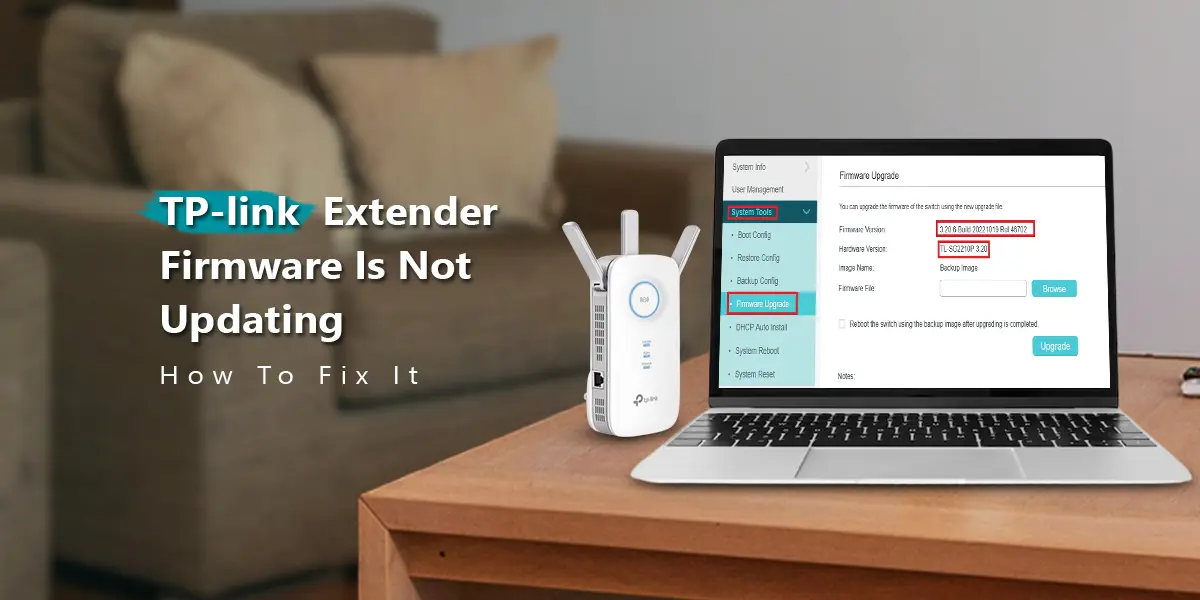
TP-Link Extender Firmware Is Not Updating - How To Fix It?
In the rapidly evolving field of technology, remaining current is essential. Upgrade to the firmware to ensure your gadgets are safe, effective, and functioning accurately. On the other hand, problems with firmware updates are usual, and TP-Link extenders are not an exception. If you’ve encountered an annoying issue with a TP-Link extender due to outdated firmware, don’t be upset! You will be guided through the troubleshooting steps to restore your device’s functionality by this detailed tutorial.
Recognizing the Value of Firmware Updates
Before diving into the troubleshooting process, it is imperative to comprehend the significance of firmware updates. These updates will ensure your device runs as safely and optimally as possible. These updates include bug fixes, security patches, and performance improvements.
TP-Link Extender Firmware Update Common Problems
The following are some possible causes of TP-Link extender firmware not updating:
- Network Connectivity: Poor network connectivity can affect the firmware update procedure.
- Firmware File Corruptive: If the firmware files crash through the transfer process, the update will not work.
- Inadequate Storage: If the extender has insufficient storage capacity, installing the firmware upgrade may be impossible.
- Software Errors: Occasionally, the update procedure may be interfered with by software errors or conflicts in the extender’s system.
Steps for Troubleshooting Firmware Update Issues
Now that possible causes are determined, let’s investigate how to troubleshoot and fix TP-Link extender firmware update issues:
Check for Stable Internet Connection: Make sure there is a reliable internet source to connect with your extender. If the Wi-Fi signal is poor, check its strength and think about moving the extender closer to the router.
- Check Compatibility: Make sure you’re downloading the correct firmware for the model of extender you own by visiting the TP-Link support website. Installing incompatible firmware may cause irreversible harm or failures.
- Manually Download the Firmware: Try to download the firmware manually from the TP-Link website if the automatic update doesn’t work. For information specific to your extender model, refer to the instructions supplied by TP-Link.
- Reset Extender: Issues with firmware updates may fixed occasionally by doing a factory reset on the extender. For ten to fifteen seconds, press and hold the extender’s reset button. Then, start from scratch tp link extender setup and tplink extender login.
- Clear Cache and Cookies: By clearing the cache and cookies of your browser, you can get rid of any temporary information that can interfere with the firmware upgrade procedure.
- Free Up Storage Space: To make space on the extender, remove any files or programs that aren’t needed. The firmware upgrade may not install properly if there is not enough storage.
- Disable Firewall or Antivirus Software: On your computer or mobile device, temporarily turn off any firewall or antivirus software. These security precautions may occasionally cause issues with the firmware upgrade procedure.
- Use a Different Device: If updating firmware on a computer is giving you trouble, try utilizing a different device to complete the update, like a tablet or smartphone, and also for tp link extender login.
- Make TP-Link Support Contact: To obtain additional help if you are still unable to upgrade the firmware after trying every possible troubleshooting method, please visit www.tplinkextender.net or the tplinkextender.net login web page. To receive individualized assistance, provide them with comprehensive details about the problem you’re having.
Final Thoughts
Updating the firmware on your TP-Link extender is crucial for optimum performance and security. While running into problems with the update process can be annoying, you can address them by using the troubleshooting techniques described in this guide. You may resolve firmware update issues and make sure your TP-Link extender keeps working at its peak by checking internet connectivity, making sure it’s compatible, and making any necessary resets or modifications. Remember, never be afraid to ask TP-Link’s friendly support staff for help if you’re ever unsure.